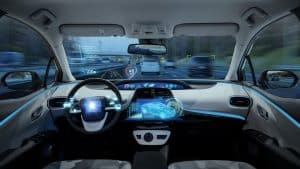New Study Shows High Crash Incidences in Autonomous Vehicles
 With technology advancing every day, we have software in our vehicles that can warn us if there is something behind us when we’re backing up, or tools that can help us to see cars in our blind spots while driving down the highway. No doubt that such technology has saved lives. However, we must remember that new technology starts somewhere, and it’s not always perfect.
With technology advancing every day, we have software in our vehicles that can warn us if there is something behind us when we’re backing up, or tools that can help us to see cars in our blind spots while driving down the highway. No doubt that such technology has saved lives. However, we must remember that new technology starts somewhere, and it’s not always perfect.
Assisted driving with autopilot and other features have broken out of the testing stages, and put autonomous vehicles on the road. The statistics we’re seeing from new studies are showing us that perhaps this sort of technology is not yet ready to be available to the general public. With increased crashes and fatalities, it is becoming clearer that more testing is needed before we’ll be able to drive these vehicles with absolute certainty in their safety.
What’s the news about autonomous vehicles in America?
In June, the New York Times (NYT) published an article about the recent effort coordinated by The National Highway Traffic Safety Administration (NHTSA) over the course of about a year, spanning from July 1, 2021 to May 15, 2022. This study was to “determine the safety of advanced driving systems as they become increasingly commonplace,” the Times wrote.
The report showed that at least 400 crashes involving driving-assistance technologies happened over the course of the period studied. There were six fatalities, and five people who were seriously injured. According to the NYT, “Teslas operating with Autopilot, the more ambitious Full Self Driving mode or any of their associated component features were in 273 crashes. Five of those Tesla crashes were fatal.”
Up until now, the NHTSA has taken a mild approach to monitoring autonomous vehicles. This is the first time they published such a serious report. With the results and findings of the study, the NHTSA can now develop rules and regulations based on what the data shows. While Tesla leads the pack with 830,000 vehicles equipped with driver-assistance technologies and auto-pilot, brands such as Ford Motor, General Motors, BMW, and others also ended up in the study, though with far fewer driver-assisted vehicles being bought and used on the road.
The NYT noted, “NHTSA’s order for automakers to submit the data was prompted partly by crashes and fatalities over the last six years that involved Teslas operating in Autopilot. Last week NHTSA widened an investigation into whether Autopilot has technological and design flaws that pose safety risks.”
While plenty of data was gathered, information on whether or not the auto-assist features assisted the driver or hurt the driver has proven difficult to interpret, with the publication explaining, “Automakers were allowed to redact descriptions of what happened during the accidents, an option that Tesla as well as Ford and others used routinely, making it harder to interpret the data.”
How the information gathered by these reports proves useful has yet to be seen, but at the very least, the NHTSA has their eyes on the market, and that should encourage regulators to crack down and be more assertive. In the end, this report is a good start to investigating the safety of driver-assistance technology.
The good and the bad of driver-assistance technology
The NHTSA categorizes vehicles into five levels of automation:
- Level 0 - Momentary driver assistance. The base level of automation already includes features such as automatic emergency braking, forward collision warning, lane departure warning. We know these features to be helpful, preventing accidents every day. In this category, the driver is responsible for monitoring and driving. None of these features drive the vehicle for you, but merely assist the driver.
- Level 1 - Driver assistance. Here, the car can take over acceleration and braking. Technology in this category includes adaptive cruise control and lane keeping assistance. Again, the driver must monitor and drive the vehicle themselves.
- Level 2 - Additional assistance. In this category, we introduce self-steering, but the driver must still have control. Features in this level include highway pilot.
All of these safety features can be found in vehicles for sale at car retailers around the nation. Levels 3, 4, and 5 are not yet available to the public, and include features such as fully autonomous driving.
We can see that the technology in the categories listed above, however, are features we use every day when driving to work, school, or home. While these automated safety features can be very helpful, we cannot rely on them alone. When car manufacturers allow drivers to believe their vehicles can drive them around without any monitoring or control, serious car accidents can occur. A car may have a feature called “autopilot,” but it is important to remember that we are far from truly self-driving cars, and that constant vigilance and monitoring is required when driving any vehicle.
We don’t mean to doubt the future of technology, but to approach and use it with caution. It’s easy to be caught up in the wave of excitement when it comes to these flashy features, but we cannot forget that these are still heavy vehicles that can do a lot of damage, and one mistake or faulty feature can lead to tragedy. If you have been injured because of driver-assistance technology failing on your vehicle, or injured by a negligent driver, call Gainsberg Injury and Accident Lawyers at 312-600-9585 or use our contact page to schedule an initial consultation with our experienced and dedicated car accident attorneys. We have spent years helping those of Chicago and Cook County.

Attorney Neal Gainsberg has spent the last 20+ years fighting to protect the rights of the injured in Chicago and throughout Illinois. For dedicated legal help with a personal injury, car accident, or wrongful death matter, contact Gainsberg Injury and Accident Lawyers in Chicago for a free consultation.
